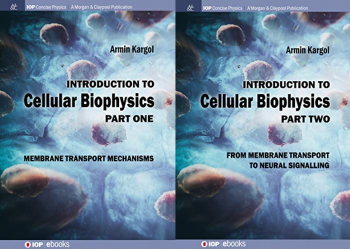
Dr. Armin Kargol has published a two-part book series on Introduction to Cellular Biophysics (Parts I and II). It is intended as a textbook for an undergraduate course in Cellular Biophysics.
While the cells are studied by different sciences, they are seen differently by biologists, chemists, or physicists. Biologists concentrate their attention on cell structure and function. What does the cell consist of? Where are its organelles? What function does each organelle fulfill? From a chemists' point of view, a cell is a complex chemical reaction chamber where various molecules are synthesized or degraded. The main question is how these, sometimes very complicated chains of reactions are controlled. Finally, from a physics standpoint, one of the main questions is the physical movement of all these molecules between organelles within the cell, as well as their exchange with the extracellular medium. The aim of this book is to look into the basic physical phenomena occurring in cells. These physical transport processes facilitate chemical reactions in the cell and that in turn leads to the biological functions necessary for the cell to satisfy its role in the mother organism.
Part I: Membrane Transport Mechanisms is an inventory of physical transport processes occurring in cells. Part II: From membrane transport to neural signaling is a closer look at how complex biological and physiological cell phenomena result from these very basic physical processes. This two-volume book has been published by Morgan and Claypool in cooperation with IOP as a part of a "Concise Physics" series. It is available in print and ebook formats: Part One, Part Two
